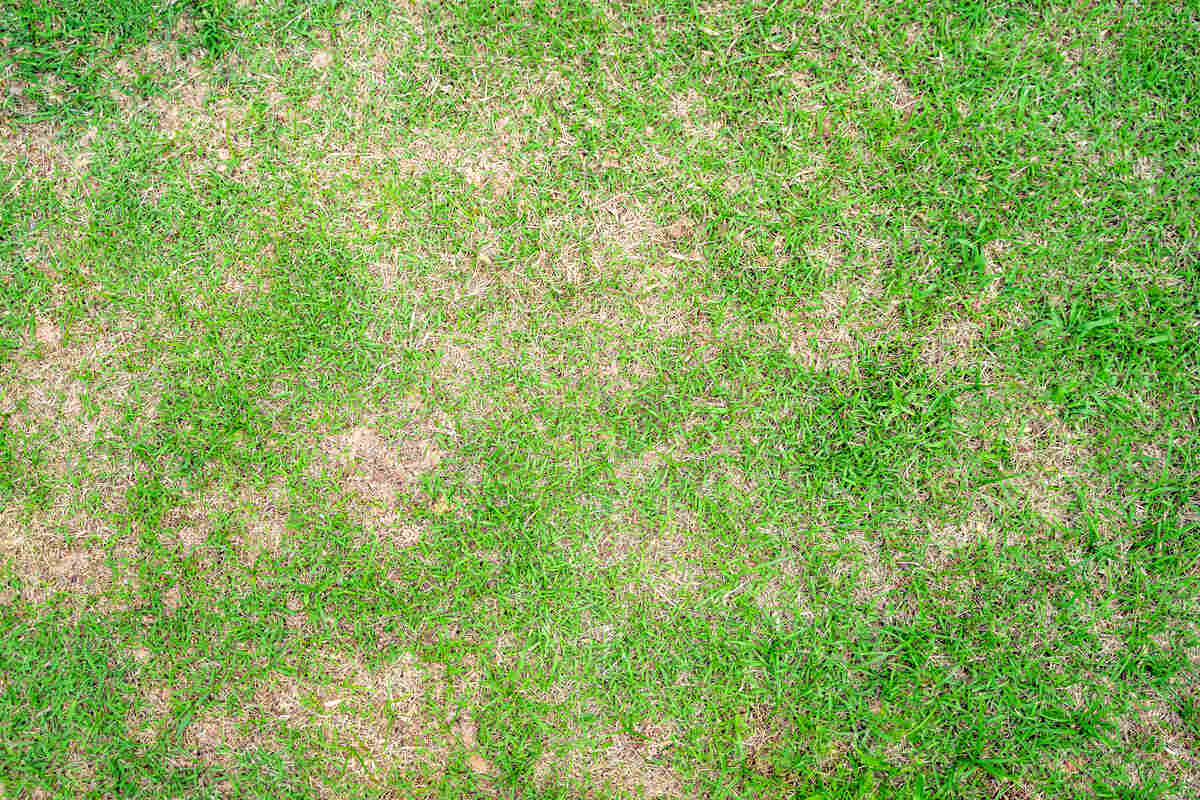
Water makes up as much as 85% of the weight of healthy grass. Like every living thing, grass needs water to function properly. Without enough H20, grass will wither, lose its resiliency, and its growth will slow down.
So if you want to keep your grass green, watch out for these 8 signs your lawn needs watering, and follow our expert tips. From drought-loving weeds popping up in your yard to footprints showing on your lawn, these are the signs that let you know your lawn needs water.
1. Curling or Folding Grass Blades
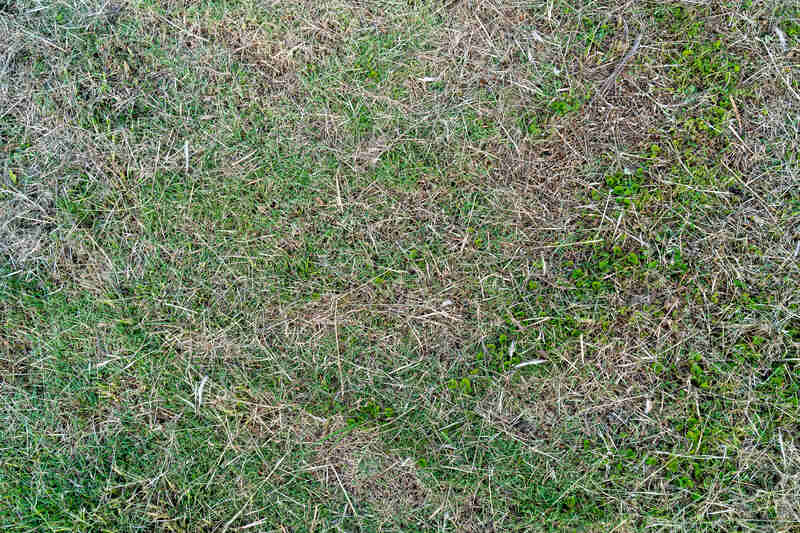
Hydrated cells keep grass blades standing proud and tall. On the other hand, wilting grass doesn’t have enough moisture to stand straight. Check your lawn for grass blades that sag, curl, or fold. It means the grass has become too limp to hold itself up due to a lack of water.
Irrigate your lawn when 30% to 50% of your grass shows signs of wilting. If the weather forecast predicts rain within the next 24 hours, you can skip the watering session and let nature take care of your grass for you.
If you’re dissatisfied with the state of your lawn but don’t have the time to handle lawn maintenance yourself, hire a lawn care pro to take care of your lawn.
2. Color Changes

Grass should be a healthy, vibrant green color during the growing season. Chlorophyll production is essential for photosynthesis, the process through which plants convert sunlight to energy, and it’s also what makes grass green.
Without sufficient water, chlorophyll production slows down, robbing your grass of its healthy green hue. Grass will become dull and lose its vibrant color, sometimes turning hues of gray, purple, or blue before turning yellow or brown.
Brown spots or yellow patches in your yard are also a sign of dehydration. However, brown grass can also be a sign of dormant grass. Dormancy protects grass from extreme heat or cold by conserving energy:
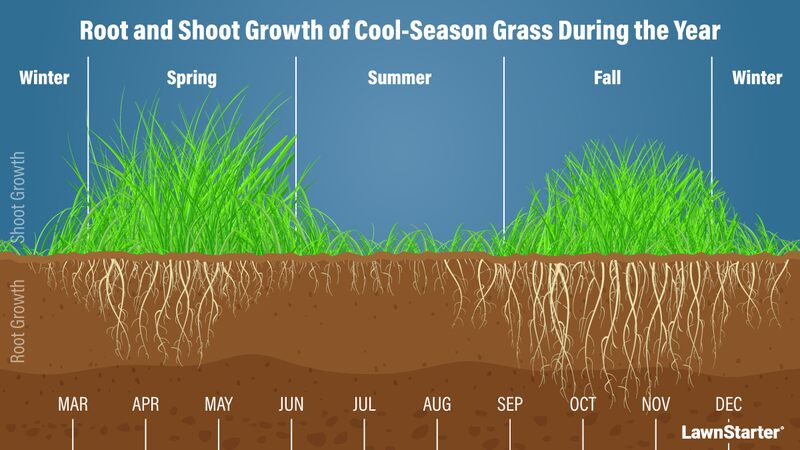
- Cool-season grasses grow best during spring and fall in air temperatures between 65-75 F. These grasses naturally go dormant in the heat and drought of summertime.
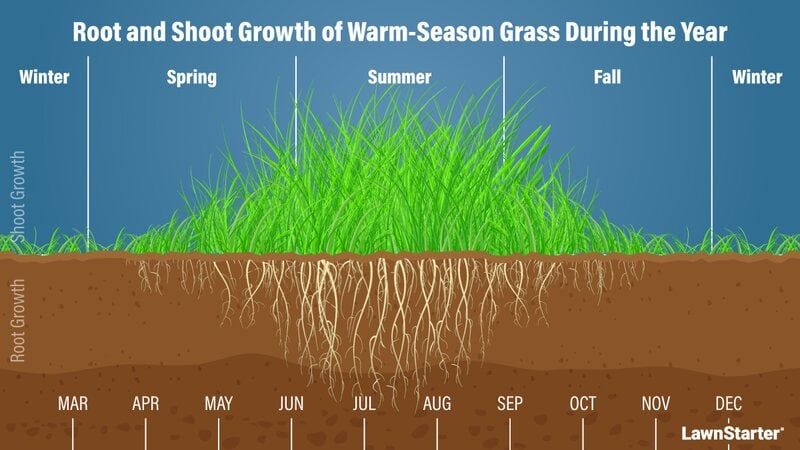
- Warm-season grasses grow best from late spring through summer. They go dormant in fall or winter when soil temperatures fall below 50 F.
Dormant grass does not need as much water as grass that is actively growing. However, if grass is not in its dormant state but is still turning brown, it’s a sign your lawn needs watering.
See Related: How to Achieve a Dark Green Lawn
3. Footprints
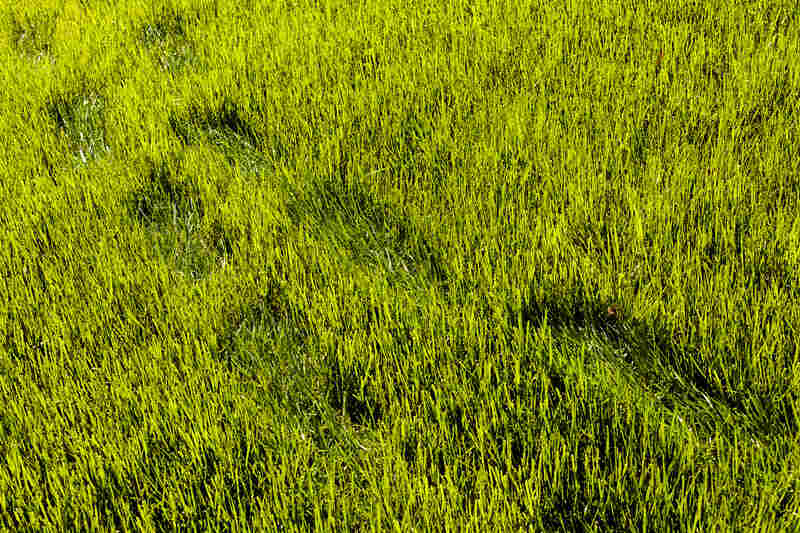
Leaving a trail of footprints behind is enchanting when you’re on the beach, but it’s a nightmare when you see footprints left behind on your grass.
Well-watered grass is springy and robust, so even when it is stepped on, it will bounce back. Dehydrated grass loses its elasticity and ability to stand upright, so you will be able to see your footprints when you walk on it.
To test the dryness of your yard, walk through your lawn and see if you leave footprints behind that last for several minutes or hours. If so, it’s time to irrigate your yard.
4. Dry Soil

The easiest way for you to check if your lawn needs water is to test the soil moisture.
When soil is as dry as a bone, your grass won’t have sufficient moisture. Water-deprived soil is dry, hard, and crumbly. When the earth is moist, it is soft and damp to the touch. The easiest way to examine your soil is to use the screwdriver test.
The screwdriver test: If you can’t see your soil, stick a screwdriver into the ground.
- When the soil is moist, a screwdriver will easily sink about 4 to 6 inches into the soil.
- When soil is dry, it becomes hard and makes it difficult to stick anything into the soil.
If you have dense grass, check the edges of your lawn where the grass runs into the hardscaping. You might be able to catch a glimpse of the soil from the edges where the grass growth is less thick, which will help you determine the moisture levels of your soil.
5. Bare Spots

Another sign of a dehydrated lawn is patchy grass or bare spots poking holes in your green carpet of turfgrass. When grass doesn’t receive enough water during an extensive drought, it will die if it loses too much of its water reserves.
Bare spots are not a definitive indicator that your lawn doesn’t have enough water. Other factors can cause patches in your lawn, such as common lawn diseases or lawn pests. But if you notice other signs of dehydrated grass in your lawn along with bare spots, it’s a good indication that your lawn is thirsty.
6. Soil Gaps
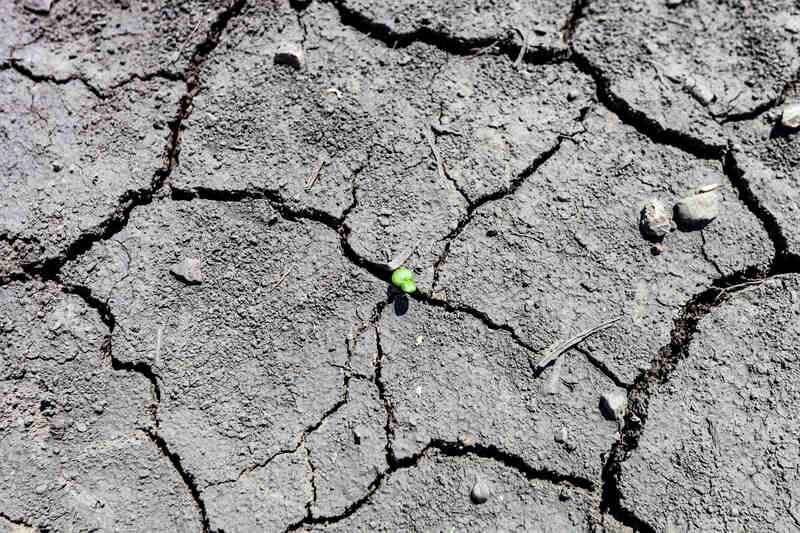
Soil shrinks when it’s dry, which results in gaps forming in the earth. “After a while of continuous drought and bare soil, crusting can occur on the top of the soil, causing the gaps,” explains Stephen Campbell, field and forage crops educator at Penn State Extension.
Soil gaps are most likely to appear between the dirt and hardscapes, such as:
- Sidewalks
- Patios
- Driveways
- Garden paths
- Retaining walls
Scan the perimeter of your yard for signs of gaps in the dirt. If you find a soil gap, it means your yard is experiencing heat stress and that you need to increase the amount of water you are giving your lawn.
7. Slow Growth
Hydrated grass grows like a weed. But when grass suffers from drought, heat stress, or dehydration, its growth slows down, as its energy is put into surviving instead of growing. When it takes longer than usual for grass to grow, it might mean that it’s time to pull out the hose.
However, cool-season grasses may go dormant during the summertime, and warm-season grasses go dormant over winter. You will still need to water dormant grass, but you can water it less frequently to keep it alive.
Summer-dormant grasses need 1/2 inch of water every 2-3 weeks during the summer season to stay alive. As warm-season grasses go dormant for the winter, you can reduce the amount of watering to around 1/2 inch per week. If the temperature is under 40 degrees Fahrenheit, don’t water the grass.
8. Weeds
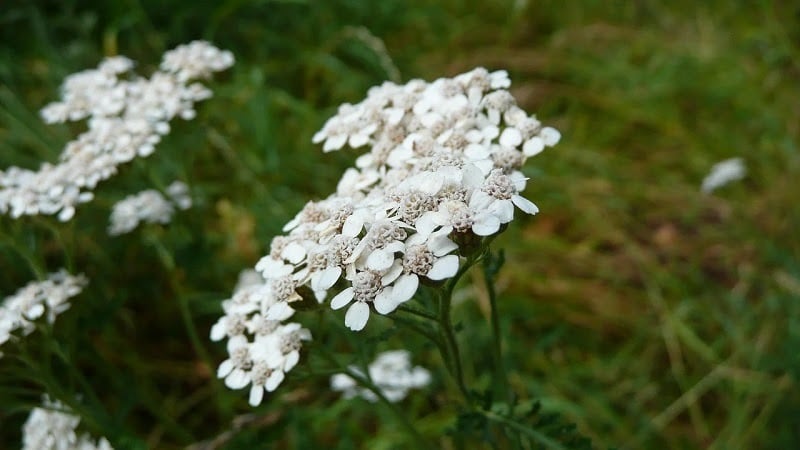
Photo Credit: Pixabay
Certain weed species thrive in dry, hot conditions and grow better and more quickly in the heat than grass, making them a competitive enemy for your lawn. In sum, an underwatered lawn will leave your turf susceptible to weed growth.
“Several indicator weeds can indicate that you have a water deficiency,” Campbell says. Here are a few drought-loving weeds that indicate your grass is experiencing dehydration:
- Black medic
- Common yarrow
- Goosegrass
- Plantain
- Prostrate knotweed
- Purslane
- Red sorrel
- Spotted spurge
- White clover
Weeds can be an indicator of both underwatered and overwatered yards, so make sure you correctly identify that the problem is an underwatered lawn, not an overwatered lawn. You don’t want to overwater a waterlogged lawn by mistake; otherwise, it will worsen the problem.
See Related:
FAQ About Signs Your Lawn Needs Watering
No. Water your lawn deeply 2 to 3 times per week for most soils. Sandy soils benefit from watering 3 times per week. This promotes deeper root growth and improves the health of your yard. Watering your lawn every day results in shallow root growth and makes your yard less heat-tolerant.
See Related: Best Time to Water Your Grass
The general recommendation is to water your lawn 1 inch a week, but multiple factors determine how much water your lawn needs:
• Turfgrass type
• Time of year
• Local climate
• Geographic location
• Soil conditions
• Amount of shade in your yard
• Lawn maintenance
Drought-tolerant grasses are better equipped to handle extreme heat and they won’t need as much water as cool-season grasses.
See Related: How Long Should I Water My Lawn?
Yes, overwatering your lawn can damage or even kill your grass. When grass is overwatered, it suffers from problems such as fungal diseases, spongy ground, or lawn pest infestations.
You can still keep your grass alive in intense heat even with water restrictions in place. Water deeply but less often to encourage deep root growth. Unless your lawn has sandy soil, follow this watering rule all the time, even when there are no watering restrictions in place. This both reduces water waste and promotes healthier grass.
Sandy soils, however, require small amounts of water more often, about 3 times a week. Sandy soils drain quickly and don’t retain water very well.
If watering restrictions prohibit watering all together, “you need to think outside the box” to maintain your lawn, Campbell says. Here are his suggestions to keep your lawn alive when watering restrictions are in place:
1. Harvest rain water: “You could collect the rain water from a rainy season and use that to start, but that source could dry up quickly with the grass’s water requirement,” says Campbell.
2. Let your lawn go dormant, switch to artificial grass, or install hardscapes: “Most homeowners choose to let their lawn go [dormant] or go to an artificial surface, as it isn’t worth the stress,” Campbell says. Painting your lawn is another option.
3. Overseed with a drought-resistant turfgrass: “The common cool-season grass that has a relatively decent drought resistance is a turf-type tall fescue. Zoysiagrass in the transition zone is a good option. Down south, Bermudagrass thrives in hot weather along with bahiagrass. Out west, centipedegrass seems to be the preferred choice. It’s all about doing a little research on the cultivar and choosing the right one for your area,” says Campbell.
Got Water?
The good news is that most grass is hardy and will recover after it gets a little water. The key to maintaining a healthy lawn through a long, hot summer is to find the right balance and listen to what your lawn is telling you about its condition. If it starts looking gray and dry or if your footprints leave indentations on the lawn, it may be time to turn on the tap.
Once your lawn has the water it needs, you might find that it grows faster and needs mowing more often. If you’re looking for a pro to handle lawn mowing or other lawn care chores, finding a local lawn care company is just a click away.
Read More: Why is My Grass Dying Even Though I Water It?
Sources:
- Fundamentals of Turfgrass Management. By Nick E. Christians, turfgrass specialist. Wiley, 2011.
- “Indicator Weeds Provide Insight into Growing a Better Lawn.” By Susan Marquesan, master gardener and master food preserver. Penn State Extension.
- “Let Your Lawn Tell You When to Water.” By L.E. Trenholm, assistant professor, and J. Bryan Unruh, state turf extension specialist. University of Florida.
- Stephen Campbell, field and forage crops educator at Penn State Extension, Butler, PA. Personal interview.
- “Summer Lawn Care.” By Bob Bricault, MSU extension educator. Michigan State University.
- “Summer Lawn Management: Watering the Lawn.” By Mike Goatley, professor and extension turfgrass specialist, Marc Aveni, extension agent, David Chalmers, extension agronomist, and Richard Nunnally, extension agent. Virginia Cooperative Extension.
- “Weeds as Indicators of Soil Conditions in Lawn and Landscapes.” By Norma Samuel, associate district extension director, and Chris Marble, associate professor of ornamental & landscape weed management. University of Florida.
Main Image Credit: Lifestyle Graphic / Adobe Stock Free / License